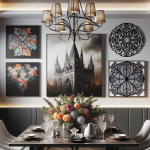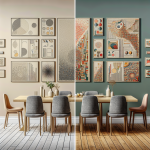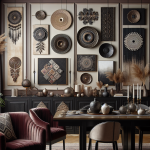In a world bustling with complexity and stress, there’s a universal truth: simple cartoon dog faces bring a smile to our faces. Whether it’s a goofy grin, floppy ears, or those twinkling eyes, these charming characters have enchanted children and adults alike. Let’s embark on a delightful journey to explore why these uncomplicated images resonate so deeply with us. Grab your favorite snack, snuggle up with your own furry friend, and dive into the joyful realm of cartoon dog faces!
The Universality of Canine Charm
Cartoon dog faces have an undeniable magnetic appeal. But why do we find ourselves drawn to these illustrations? One reason is simplicity. A basic design can convey emotions effortlessly. Take, for example, the symbol of a happy dog—just two dots for eyes, a large triangle for a nose, and a wide, curved mouth. Instantly, we recognize the joy radiating from that face.
Nostalgia Factor
For many, cartoon dog faces evoke nostalgia, reminiscent of beloved childhood shows or furry companions. Think of characters like Scooby-Doo or Snoopy; these figures are intertwined with happy memories. This connection creates a comforting sense of familiarity, making us feel safe and content.
Visual Communication
Cartoon dog faces also excel in visual communication. They speak volumes without uttering a single word. A tilted head can express curiosity, while a wagging tail (even if it’s just drawn with a few swishes) embodies excitement. This non-verbal messaging resonates in a world often filled with noise and distraction.
Artistic Versatility: From Minimalist to Exaggerated Styles
The beauty of cartoon dog faces lies in their versatility. Artists can explore a myriad of styles, from minimalist designs to exaggerated cartoonish features. Let’s delve into some popular artistic variations that continue to captivate audiences.
Minimalist Designs
Minimalism strips down the complexities of representation, focusing on essential features. Take a simple circle for a head, dots for eyes, and a small triangle for a nose. This reduced style not only creates a sense of calm but also allows viewers to project their emotions onto the character.
Exaggerated Features
On the flip side, exaggerated designs amplify personality. Oversized heads, goofy expressions, and disproportionate body parts can heighten comedic effects. Think of characters like Pluto or Brian from "Family Guy." These designs can create laughter while still delivering heartfelt moments.
Diverse Cultural Representations
It’s essential to recognize that cartoon dog faces are not uniform across cultures. Different styles may emphasize particular traits that resonate with specific communities. For instance, certain cultures may showcase their local breeds, while others might stylize them in ways that reflect their unique artistic traditions.
The Role of Colors: Brightening Our Day
Color choices can heavily influence our emotional responses. Cartoon dogs often feature vibrant color pallets that spell joy. But how do colors play into the charm of these cartoon canines?
Warm Tones for Happiness
Warm colors like yellows, reds, and oranges evoke feelings of happiness and warmth. A bright yellow cartoon dog can instantly lift moods, making it an ideal choice for a cheerful character.
Cool Colors for Calm
Conversely, cool colors like blues and greens can create a sense of calm. A soft blue cartoon dog might give off a more relaxed vibe, inviting viewers into a world of tranquility.
Contrasting Colors for Fun
Using contrasting colors can add vibrancy and energy to the character, making it stand out. A brown dog with a bright pink collar or a blue background creates a lively visual that catches the eye.
Emotional Connections: Pet Therapy in A Cartoon Form
Cartoon dog faces can trigger emotional connections similar to real-life pets. They offer a source of comfort, companionship, and even joy during tough times. Here’s how these characters make a positive impact.
Love and Companionship
A simple cartoon dog can represent love and loyalty. The emotions tied to these beloved animals often translate into their animated forms, allowing viewers to connect on a personal level. They remind us of our real-life furry friends and the joy they provide.
Stress Relief
In today’s fast-paced world, stress relief is more crucial than ever. Cartoon dog faces often provoke laughter, smiles, and a sense of nostalgia, offering a respite from daily concerns. The quirky and over-the-top designs can initiate laughter, proving that humor is an effective stress buster.
Promoting Kindness
Many cartoon dog characters embody kindness and goodness. By portraying these values, they can inspire viewers to reflect on their behavior and spread positivity. Characters like Spunky from "Rocko’s Modern Life" or the friendly pups from "Paw Patrol" encourage kindness, friendship, and teamwork.
In Popular Culture: How Cartoon Dog Faces Permeate Society
Cartoon dog faces have infiltrated various aspects of popular culture, from television shows to merchandise and social media. Here’s a closer look at their cultural impact.
Television and Film
Shows like "The Dog Whisperer" or "Clifford the Big Red Dog" showcase cartoon dogs that have become cultural icons. Viewers not only enjoy the stories but also form emotional bonds with these characters, leading to prolonged popularity.
Merchandise Galore
From plush toys to clothing, cartoon dog faces grace numerous products that appeal to various demographics. The feeling of owning a piece of this cartoon world translates to joy and comfort in our own lives.
Social Media Presence
Social media platforms are teeming with cartoon dog illustrations, memes, and animations. They often serve as a humorous commentary on pet ownership or everyday life. With shares and likes transcending demographics, cartoon dog faces nurture community engagement.
Creating Your Own Cartoon Dog Face
Feeling inspired? Creating your cartoon dog face can be a fun and rewarding activity! Here’s a step-by-step guide to help you craft your own cheerful canine character.
Step 1: Choose a Character Style
First, decide whether you want a minimalist or exaggerated style. Each will yield distinct characteristics that convey different emotions.
Step 2: Sketch Your Design
Begin with a basic outline of a dog’s head. Start with a simple circular shape for the face and add distinct features like ears, eyes, and a mouth.
Step 3: Add Emotions
Think about the emotion you want your cartoon dog to express. Adjust the shapes and angles—droopy eyes can indicate sadness, while wide, upward-sloping lines create happiness.
Step 4: Play with Colors
Choose a color palette that fits the personality of your dog. Bright colors can convey excitement, while muted tones might reflect peacefulness.
Step 5: Final Touches
Refine your design by adding small details like whiskers, patterns, or accessories (like a collar). These elements will give your cartoon dog personality.
The Psychology Behind Our Love for Cartoon Dogs
Understanding our affinity for cartoon dog faces can also lead to insights in psychology. What happens in our brains when we see these charming designs?
The Power of Cutness
Researchers have found that cute faces activate the reward centers in our brains, releasing dopamine—the "feel-good" hormone. Simple cartoon dog faces fit our innate love for all things cute, triggering positive emotions and reinforcing our appreciation for these characters.
Emotional Resonance
Moreover, anthropomorphizing dogs allows us to explore our feelings and emotions. Seeing human-like traits in cartoon dogs can provide emotional relief and allow us to process our feelings more openly.
Connection to Identity
Cartoon dog faces often become cultural icons, allowing fans to associate closely with them. These characters can represent values or characteristics they admire—loyalty, joy, or innate innocence. This connection often fosters a sense of belonging among fandoms.
Conclusion: The Lasting Legacy of Cartoon Dog Faces
As we draw this exploration to a close, it’s clear that simple cartoon dog faces have carved a special place in our hearts and culture. Their ability to evoke joy, comfort, and laughter makes them enchanting companions through our digital screens and everyday lives.
What makes these designs even more delightful is their flexibility, whether institutionalizing core values or making us smile with playful antics. As we navigate this fast-paced world, cartoon dogs remind us of the importance of simplicity, joy, and the paw-sitive vibes that accompany our furry friends.
FAQ
What makes cartoon dog faces universally appealing?
Cartoon dog faces are universally appealing because they convey emotions simply and effectively, often evoking nostalgia and comforting memories related to our childhoods or pets.
How can I create my own cartoon dog face?
To create your own cartoon dog face, choose a style (minimalist or exaggerated), sketch a basic design, express emotions through various facial features, play with color palettes, and refine your character with fun details!
Why do cartoon dogs commonly appear in popular culture?
Cartoon dogs are relatable characters that embody love, friendship, and humor, making them perfect for storytelling in films, TV shows, and social media. Their charm often leads to merchandise, which keeps their presence alive in various consumer markets.
Can looking at cartoon dog faces improve my mood?
Absolutely! Cartoon dog faces can activate the reward centers in our brains, releasing dopamine and fostering feelings of happiness and comfort.
What role do colors play in cartoon dog designs?
Colors have a profound impact on the emotional response we have to cartoon dogs. Warm colors often convey happiness, while cool colors can evoke calmness, enhancing the character’s overall emotion.
How do cartoon dog faces promote positive values?
Many cartoon dogs embody kindness, loyalty, and friendship, inspiring viewers to reflect on their own behaviors and promote positivity in their interactions with others.





+ There are no comments
Add yours